A controversial group of Morris Dancers ‘blacked up’ their faces for their traditional Easter parade in Lancashire yesterday.
The group performed their day long dance through the town of Bacup from 9am on Easter Saturday to raise funds for Rossendale Hospice.
The group insists ‘blacking up’ is part of a clog-dancing tradition dating back more than 150 years – and has nothing to do with ethnicity.
Yesterday, they danced while stopping at several ‘famous’ landmarks, travelling to Irwell Terrace before taking a short break for lunch.
The team then divided into two groups of four and performed their way to various pub locations, ending at the Glen Service Station in Waterfoot at 7pm.
The controversial event attracts many visitors with tourists and curious passersby following the team on their route.
The traditional costume is understood to symbolise ‘a Moorish Pirate; the hat is of a turban style’.
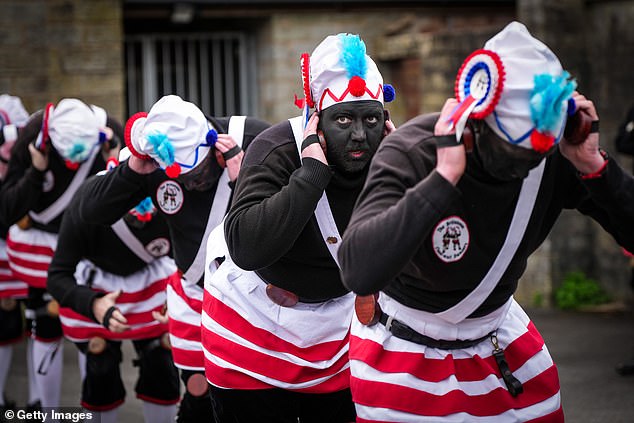
Members of the Britannia Coconut Dancers perform the Easter ritual of dancing boundary to boundary yesterday in Bacup, England
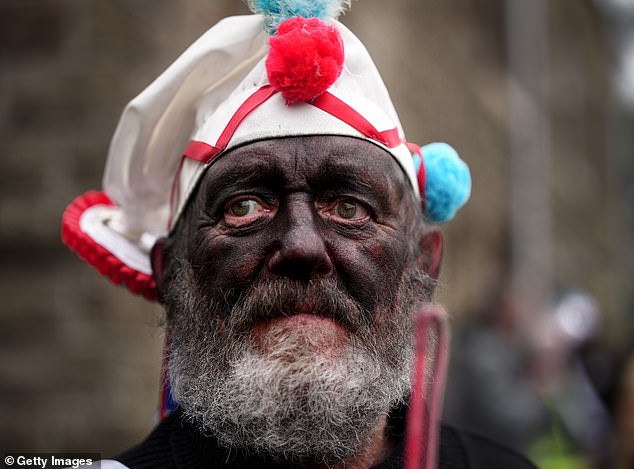
The clog-dancing troupe, also known as the Coconutters, has attracted controversy in recent years for its full-face black makeup
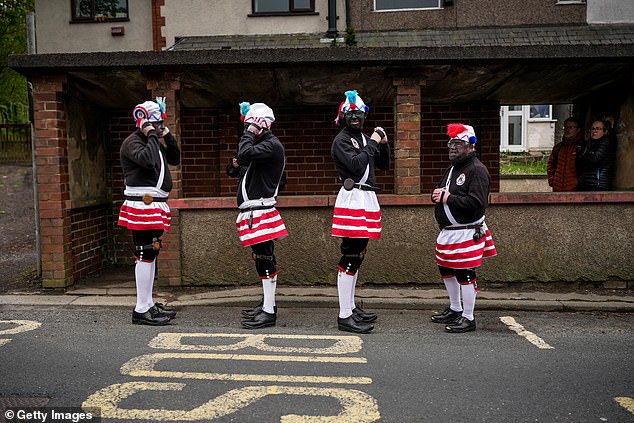
The group performed their day long dance through the town of Bacup on Easter Saturday to raise funds for Rossendale Hospice
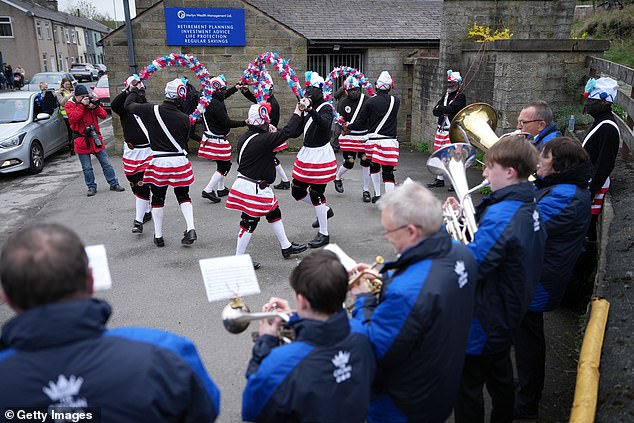
The group insists ‘blacking up’ is part of a clog-dancing tradition dating back more than 150 years – and has nothing to do with ethnicity
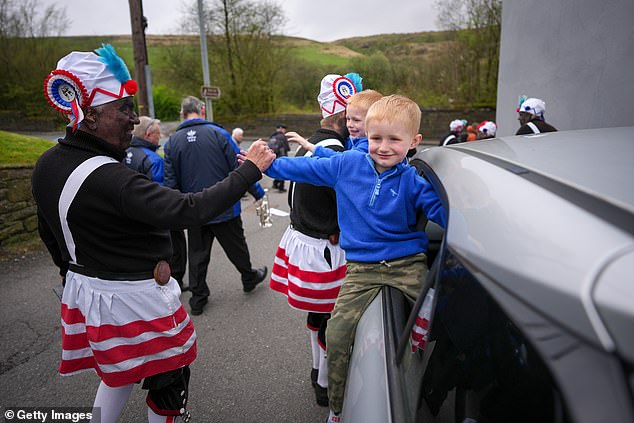
Yesterday, they danced while stopping at several ‘famous’ landmarks where visitors and locals watched in fascination
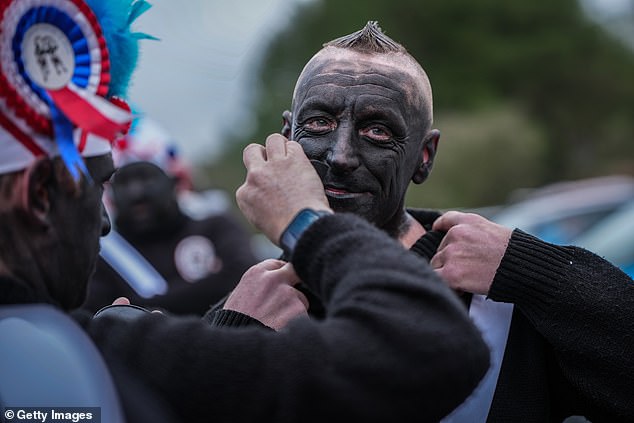
A man is seen with a ‘blacked up’ face at yesterday’s traditional dancing event
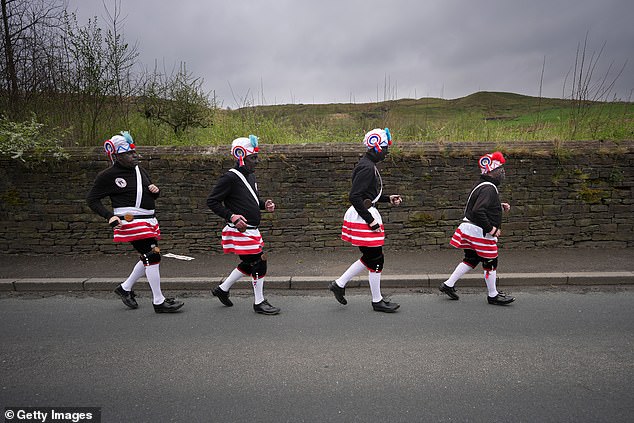
Each dancer has a set of ‘five nuts’ and a white kilt with three horizontal red stripes
Each dancer has a set of ‘five nuts’ and a white kilt with three horizontal red stripes.
The event has been surrounded by controversy, with the group splitting from the Joint Morris Organisation, the umbrella group which represents the country’s 800 dancing ‘sides’.
The body felt that the ‘full face black or other skin tone make-up is a practice that has the potential to cause deep hurt’.
In 2021, Lancashire BME Network backed the dance troupe and said they had ‘never seen it as a racial thing’ within the context.
In a statement, the dance group previously said: ‘Our age-old tradition is embedded in the hearts and souls of the people of Bacup, Rossendale and overseas.
‘We have discussed the use of black face make-up in great detail and have come to a unanimous decision that this will continue to be part of our unique mining tradition.’

Members of the Britannia Coconut Dancers perform the Easter ritual of dancing boundary to boundary yesterday
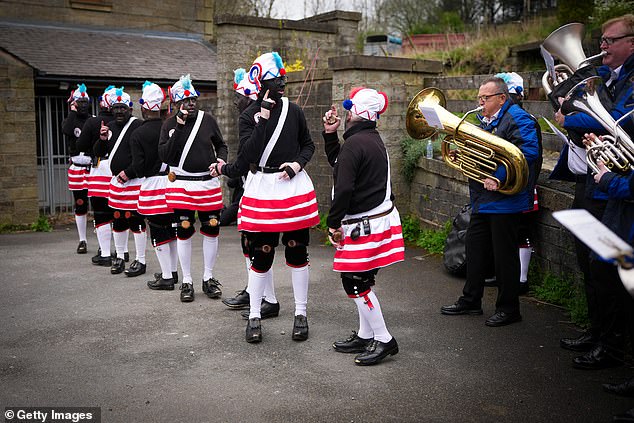
The clog-dancing troupe, also known as the Coconutters, has attracted controversy in recent years for its full-face black makeup
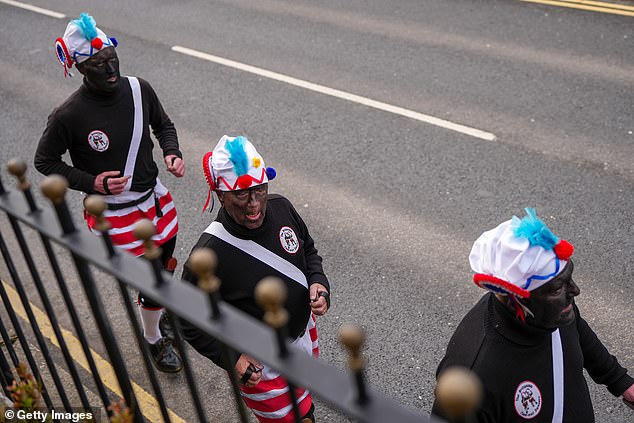
Five years ago, the group split from the Joint Morris Organisation, an umbrella group representing the country’s 800 or so troupes, after being told to stop painting their faces black
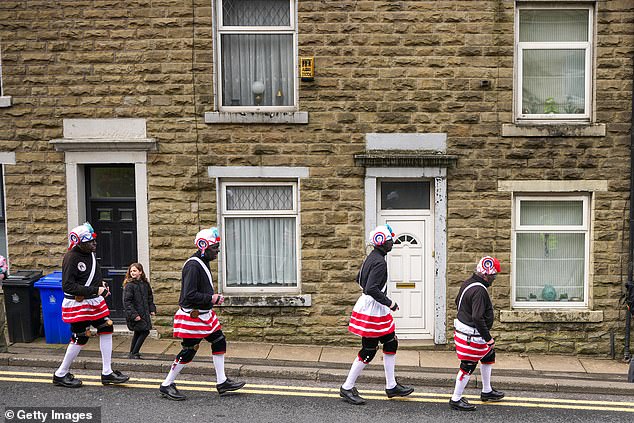
The Joint Morris Organisation had ruled that ‘full face black or other skin tone make-up was a practice that had the potential to cause deep hurt’
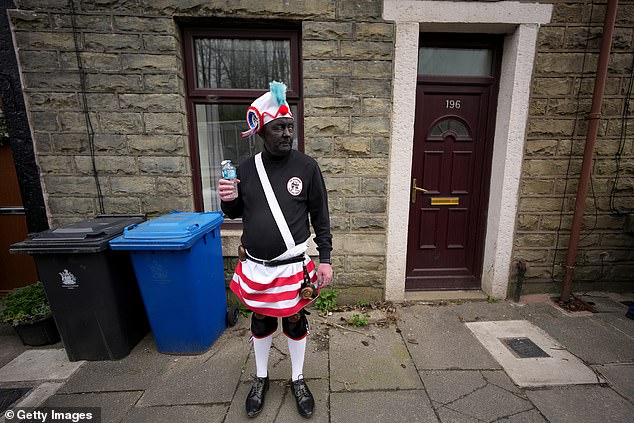
The traditional costume is understood to symbolise ‘a Moorish Pirate; the hat is of a turban style’







